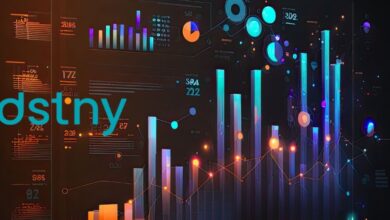The Game-Changing Role of Tech Innovations in Advertising Strategies

From the utilization of big data analytics to the integration of artificial intelligence and augmented reality, the incorporation of these technological tools not only enhances the creative process but also optimizes the overall campaign performance. This shift towards tech-driven approaches is setting new standards in the advertising industry, compelling marketers to adopt innovative tactics to remain competitive and relevant in the digital age.
The Impact of Big Data on Targeted Advertising
Big data analytics has revolutionized the way advertisers approach campaign strategies, enabling a level of targeting previously unimaginable. By analyzing vast datasets, marketers can now identify and segment audiences with incredible accuracy, tailoring messages to meet the specific needs and preferences of different demographic groups. This level of customization increases the effectiveness of ad campaigns, leading to higher conversion rates and improved ROI.
Big data also offers insights into consumer behavior, predicting trends and preferences. This predictive capability allows marketers to stay ahead of the curve, crafting campaigns that resonate with the audience’s future desires. By leveraging big data, advertising strategies become more proactive rather than reactive, setting a new benchmark for personalization and precision. With marketing experts predicting continued growth in big data utilization, it is evident that this technology will continue to play a game-changing role in advertising strategies. It will be fascinating to see how advertisers capitalize on this powerful tool in the future.
Artificial Intelligence in Creative Development
The integration of artificial intelligence (AI) into advertising has opened up new avenues for creative development. AI tools can generate content, suggest design elements, and even optimize ad placements, streamlining the creative process significantly. This automation of mundane tasks allows creative teams to focus on the strategic and innovative aspects of campaigns, fostering an environment where creativity thrives.
AI also plays a critical role in testing and learning from campaigns. By analyzing performance data, AI can identify what works and what doesn’t, enabling real-time adjustments. This continuous improvement cycle ensures that advertising strategies remain effective, engaging, and relevant to the target audience.
The Role of Augmented Reality in Engaging Experiences
Augmented reality (AR) has the power to transform advertisements into interactive experiences, engaging consumers in a novel and immersive way. By overlaying digital information in the real world, AR can bring products and services to life, allowing consumers to interact with them before making a purchase. This interactive element not only captivates the audience’s attention but also strengthens the emotional connection with the brand.
AR campaigns provide a unique opportunity for storytelling, enabling brands to weave narratives that consumers can actively participate in. This engagement fosters deeper brand loyalty and can significantly enhance the effectiveness of advertising efforts. With AR, the possibilities for creating memorable and impactful ad campaigns are virtually limitless.

Social Media Algorithms & Advertising Effectiveness
The algorithms powering social media platforms play a critical role in determining the visibility and effectiveness of advertising campaigns. By understanding and leveraging these algorithms, marketers can ensure that their content reaches the desired audience. This involves optimizing content for engagement, as platforms tend to prioritize posts that generate interactions such as likes, comments, and shares.
Social media offers powerful targeting capabilities, allowing advertisers to reach specific demographics, interests, and even behaviors. This precision, combined with the virality potential of social media, makes it an invaluable tool for modern advertising strategies. As social media continues to evolve, staying ahead of algorithm changes and trends is essential for maximizing campaign performance.
The Future of Programmatic Advertising
Programmatic advertising represents the future of ad buying, utilizing algorithms and AI to purchase ad space in real time. This method offers unparalleled efficiency, eliminating the need for traditional negotiations and manual placements. By automating the buying process, advertisers can focus more on strategy and creative development, while the technology handles the logistics.
The real power of programmatic advertising lies in its ability to use data to make instant decisions about where and when to place ads, maximizing visibility and engagement. As technology evolves, programmatic platforms are becoming smarter, offering more sophisticated targeting and optimization capabilities. This evolution is leading to a more dynamic, efficient, and effective advertising landscape, where the focus shifts from quantity to quality of ad placements.
Technology innovations continue to disrupt and transform the advertising industry, driving a shift towards data-driven, personalized, and interactive campaigns. By embracing these advancements and staying on top of emerging trends, brands can stay relevant and competitive in the ever-changing landscape of advertising. The future holds even more exciting possibilities as technology continues to push the boundaries of what is possible in the world of advertising. With the right approach and utilization of tech innovations, brands can create impactful and memorable campaigns that resonate with their audience for years to come.




